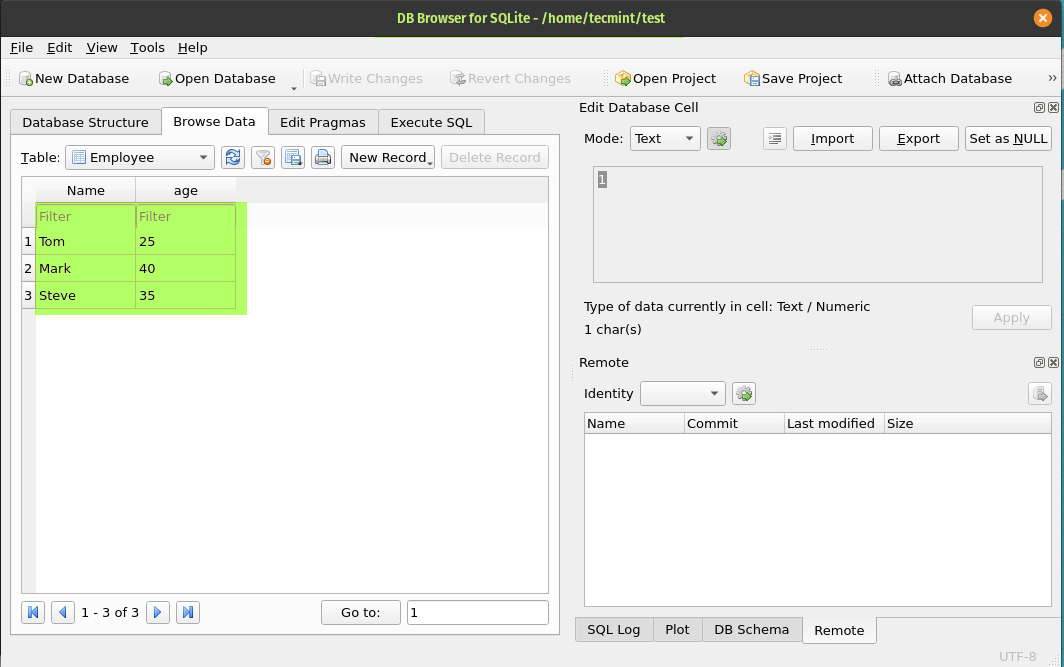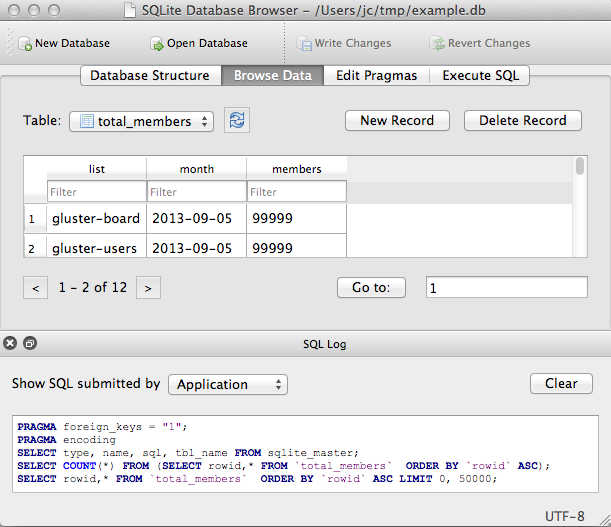
- #View sqlite database how to#
- #View sqlite database update#
- #View sqlite database android#
- #View sqlite database download#
To view data saved in the table click on Browse data, now that’s it we have completed our today’s task. Now go to that location where you have saved the database previously and then select the database file and click on open.
#View sqlite database download#
Download a suitable SQLite browser for your device from the above link and open it.Ĭlick on the open database this will open a dialog box choose a database file. Now to view the database we required SQLite browser, you can download SQLite browser from. sqlite, for that right-click on the database name and save file at any desired location but remember the location then click on ok in Save As dialog box. Now, select database and download database whose extension will be. To search your package name go to data > data> package name.
#View sqlite database android#
Step 3: Search for Device File Explorer in android studioĭevice file explorer can be found in the bottom-right corner of the android studio screen. So successful, in fact, it can justifiably call itself the most widely deployed database engine in the world. MVVM (Model View ViewModel) Architecture Pattern in AndroidĬonnect external device or emulator with android studio make sure the name of the device must be shown on android studio screen. The SQLite database library and tools are a phenomenally successful open-source Structured Query Language (SQL) database project.
#View sqlite database how to#

Check if Email Address is Valid or not in Java.How to open dialer in Android through Intent?.Android | How to send data from one activity to second activity.How to build a simple Calculator app using Android Studio?.Android | Implicit and Explicit Intents with Examples.Android | Android Application File Structure.The Application Manifest File | Android.How to Request Permissions in Android Application?.Android | How to open Camera through Intent and display captured image.How to Delete Data in SQLite Database in Android?.How to Read Data from SQLite Database in Android?.How to Create and Add Data to SQLite Database in Android?.
#View sqlite database update#


This is a partial decomposition of the paths (as opposed to storing, C:, abc, xyz.txt). Is should then be possible to build a view that simply has: CREATE VIEW OldPaths AS SELECT ID, (SELECT A.Path From A.NewPaths WHERE A.ID = Folder) || Path I have considered storing paths like: ID | Folder | Path

I’m more of a MS SQL guy so don’t know much about SQLite, and it’s not the “best” way to do this but rather than a giant change that takes a long time to implement could we do something more transitional where a more optimized lookup table lives alongside the current active table? Then the places that access the old table can be updated in small chunks at a time in order of the most expensive performance wise.


 0 kommentar(er)
0 kommentar(er)
